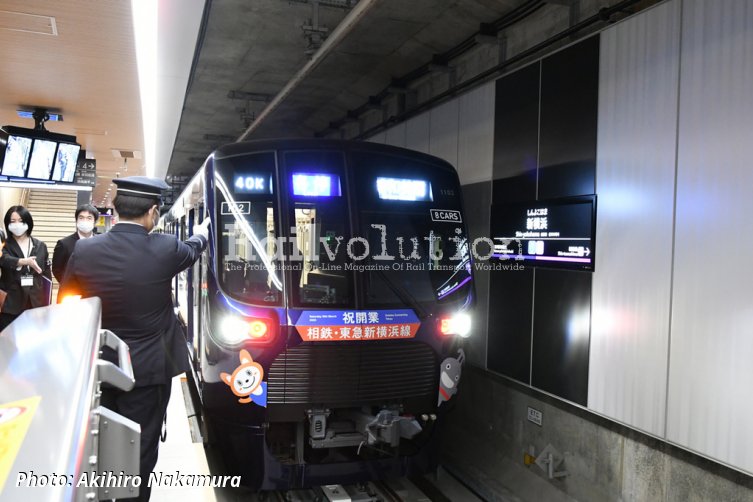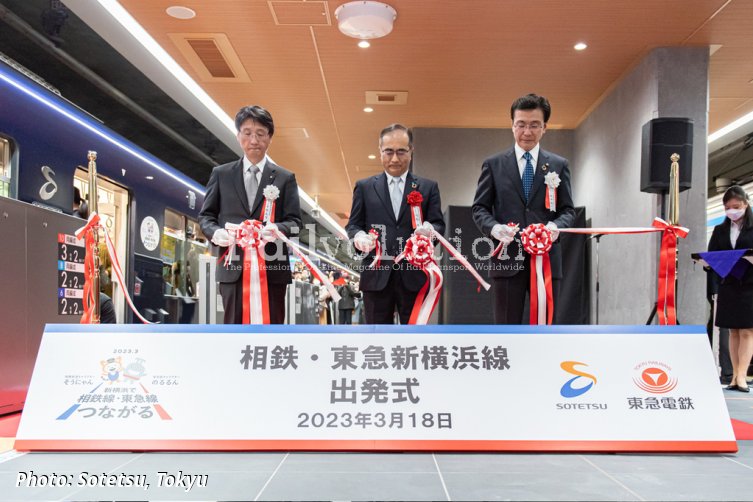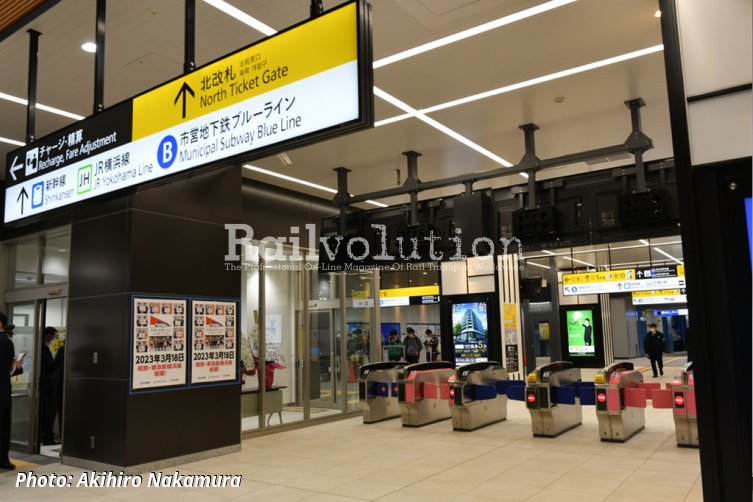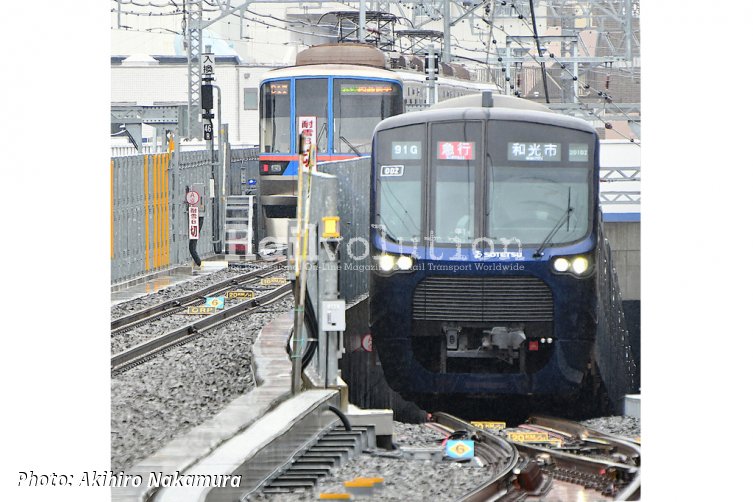The Three Main Railway Networks In Tokyo Interconnected
posted on 23rd Mar 2023 19:00
With the inauguration of the section of the new Shin-Yokohama line, the new Tokyo Railway Interconnection has been completed forming wide area network. It is part of a larger project.
We have already reported on it. On 28 March 2019, Hazawa-Yokohama-Kokudai station was inaugurated as part of the Sōtetsu JR Link Line Project, which connected the private Kanazawa and Yokohama prefecture’s Sōtetsu railway to the JR freight yard and allowed trains to pass between Sōtetsu and JR networks. In other words, from that day on, Sōtetsu trains could travel to Tokyo and JR trains from Tokyo to the Sōtetsu network.
The next step took place on 22 July 2022, when the second link was opened, this time in the direction to connect the Sōtetsu and Tōkyū private railways via a new Sōtetsu Tōkyū Link Line. This new line from the above-mentioned Hazawa-Yokohama-Kokudai station to Shin-Yokohama station was in the direction to another railway, the private Tokyu Railway. The Shin-Yokohama on the new link offered easier connections to Tokaido Shinkansen trains, especially for travelers to/from the Kanazawa area. There are also connections to the Yokohama Metro. This half of the connecting line became part of the Sōtetsu network.
The final section, the Shin-Yokohama line, was opened on 18 March 2023. The line extends the above mentioned line from the new Shin-Yokohama station to Hiyoshi station on the Tokyu railway network, thus connecting it to the Tokyu Toyoko line and the Tokyu Meguro line. Both sections of the 10 km link are underground tunnels, including Shin-Yokohama station, which is shared by both railways (in the sense of being part of the network).
This results in a wide area network connecting three railway networks and is now operated by seven different railways (sharing their networks). This reduces the need for transfers and also shortens travel times. For Shinkansen travellers from Shibuya in Tokyo, it reduces the fare when changing at Shin Yokohama. It is estimated that the new route will be used by 100,000 passengers per day.
Some trains run directly from Sotetsu's Futamatagawa terminal to Meguro (Tokyo) or other Greater Tokyo cities via Tokyu lines. Sōtetsu and Tokyu are also purchasing the new EMUs. An interesting detail is that there are trains with different loading gauges. Those running to or from the Meguro line have a slightly smaller loading gauge than those on the other lines (the Meguro line connects with the Tokyo Metro Namboku and Toei Mita lines beyond Meguro). Sotetsu's Class 21000 for the Meguro line has by 470 mm shorter cars (compared to the "normal" Class 20000' with a length of 19,970 mm). They are also slightly different in width (2,800 mm compared to 2,950 mm) and height (3,800 mm compared to 4,000 mm).
In service are 8-car EMUs to Meguro (rarely 6-car EMUs) and 10-car EMUs to other directions. The new interconnection is operated by the Japan Railway Construction, Transport and Technology Agency (JRTT), which constructed it. Sōtetsu and Tokyo collect the operating revenue for their respective parts and pay JRTT for the use of the railway infrastructure. The track is of 1,067mm gauge with a 1,500 V DC catenary.
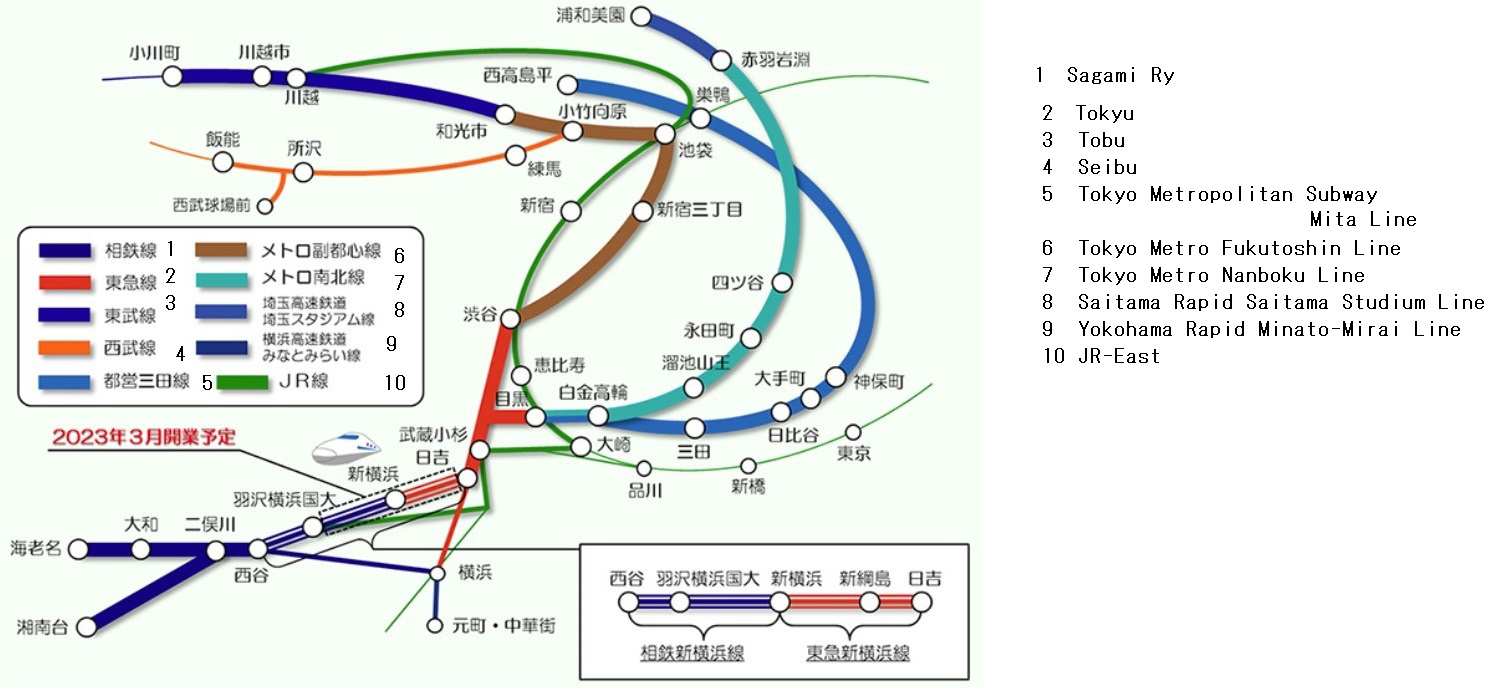
Map: Sōtetsu: On 18 March 2023, the wide red section with the dotted frame to the right of the Shinkansen picture was inaugurated. The Sōtetsu network is shown in dark blue on the left, joining the Tokyu network (red) at Shin Yokohama station. Only a fraction of the Tokyu network is shown here. Green is Tokyo's inner circle line Yamanote, and wider lines are through services. Inside the Yamanote circular metro lines and through metro other private railway lines in the north.

